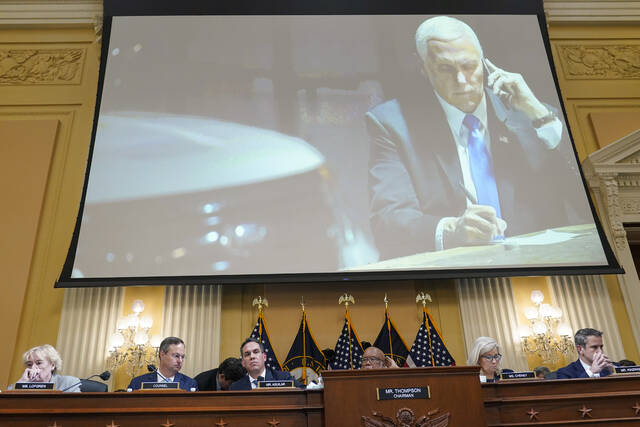The Supreme Court building is surrounded by crowd-control barricades after the leak of a draft decision in the Dobbs case. The plaza was clear, however, on April 22, Earth Day, when Wynn Bruce of Boulder, Colo., set himself aflame to protest climate change.
Bruce’s extreme deed, an echo of the Buddhist monks who self-immolated in 1960s Saigon, is not as mystifying as it could be, because we are steeped in climate catastrophism. A 2021 international survey found that beyond worrying about climate change, 56% of young people believe that “humanity is doomed.” Celebrities like prince (ex-prince?) Harry and his wife, Meghan Markle, have announced that they are limiting their family to two children for the sake of the planet, and Rep. Alexandria Ocasio-Cortez warned that “The world is going to end in 12 years if we don’t address climate change.”
The failure of serious people to grapple with the problem of climate change with balance, maturity and realism is nearly as serious a problem as climate change itself.
Climate change is a big problem, but it is not an extinction-level event. No respected scientific body, including the UN Intergovernmental Panel on Climate Change, says climate threatens to end human civilization. Not even close.
The IPCC estimates that by 2100, 78 years from now, the global economy will be between 300% and 500% larger than it is today. Richer societies are more resilient than poor ones and less vulnerable to climate shocks. Compare the damage a hurricane does in Haiti versus Miami.
This doesn’t mean climate change is unimportant. At the more extreme end of possible effects, many low-lying cities would face flooding, agriculture would be affected and habitats for a number of animals would be destroyed. It’s also possible that warmer average temperatures could spawn new pathogens.
These are all potential effects of a warmer world, but as MIT economist Robert Pindyck argues in his forthcoming book, “Climate Future,” there is tremendous uncertainty about how the environment will respond to increasing amounts of greenhouse gasses. How high will global temperatures go? We don’t really know. How much will the oceans rise? Unclear.
Pindyck makes a strong case that we must prepare but departs from the usual advice. Nearly everything you see and hear on the subject of climate contains the same message: Reduce carbon emissions to zero as quickly as possible. Pindyck begs to differ. He’s for reducing emissions, but also for adaptation.
Reducing emissions is both difficult and insufficient. Since 1995, emissions from Europe and the U.S. have been declining somewhat, while emissions from Asia have been climbing sharply. Nations can pledge to cut their emissions by set amounts by given dates, but as Pindyck asks, if they fail to meet their targets, “Who goes to jail?” The countries that are the biggest greenhouse gas emitters are China, India, Pakistan, Indonesia and other developing nations that are rushing to improve living standards and will look askance at demands that they remain poor to “save the planet” while the first world looks on from air-conditioned comfort.
Pindyck favors a world carbon tax while acknowledging there are enforcement issues. Just as with voluntary targets, you’d have to ask, who goes to jail if a nation fails to enforce it? And let’s not forget the yellow vest protests in France that followed a tax on diesel fuel, or Biden’s sinking popularity here in the face of rising gas prices. A straight carbon tax is superior to subsidizing green energy though, since, as Pindyck notes, “Politicians will decide what to subsidize … and subsidies will go to those firms and industries that have political influence.”
Pindyck’s other recommendations are eminently doable. He makes a strong case for investing in adaptation. Rising sea levels? One-third of the Netherlands is below sea level. They’ve been building dikes for 800 years. Dikes, levees and sea walls can be built in low-lying areas around the globe. Governments should invest in heat-resistant strains of grain and other crops, research and development on batteries, carbon capture technology, and geoengineering.
Above all, the world needs a huge commitment to nuclear energy. Fossil fuels pollute. Renewables are clean but cannot handle the volume needed to power the world. Nuclear is safer than fossil fuels and more plentiful and reliable than wind or solar. And the cost is high because groundless fear has made regulation excessive and costly. We can change that.
Pindyck, while worried, is an optimist, and his book is brimming with the technological wonders we can deploy to confront this challenge. My own bias is that we stick to solutions that don’t require differential sacrifice by different countries around the globe, because people won’t comply. Adapt, improvise and innovate. Switch to nuclear as fast as possible, and stop terrifying the kids. Climate change is a problem. It’s not the apocalypse.







